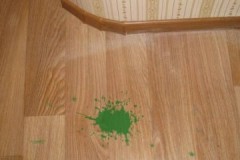How and with what to quickly and carefully remove paint from plastic?
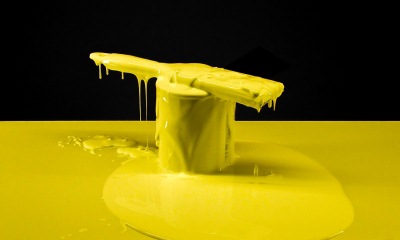 If during repair work all surfaces were not protected from ingress paints, then stains cannot be avoided. Car owners often face the problem of removing paint from plastic.
If during repair work all surfaces were not protected from ingress paints, then stains cannot be avoided. Car owners often face the problem of removing paint from plastic.
Plastic items that require processing can cause a lot of problems in this case. Products that can remove even stubborn stains will come to the rescue.
Let’s take a closer look at how and how to remove paint from plastic at home.
Content
All possible difficulties
 The difficulty of clearing paint from plastic is associated with the material itself, which does not easily tolerate aggressive (caustic and abrasive) cleaning agents that can disrupt the smoothness of the surface or corrode it.
The difficulty of clearing paint from plastic is associated with the material itself, which does not easily tolerate aggressive (caustic and abrasive) cleaning agents that can disrupt the smoothness of the surface or corrode it.
Also it should not be exposed to strong heat, so as not to provoke deformation of the thing. Therefore, due to such limitations, widespread methods based on thermal and mechanical effects are not suitable for plastic objects.
But if the “culprit of the problem” is water-based paint, then heating the surface with a hairdryer to 60 or 70? will help remove it. At the same time, it will begin to lag behind, and it will be easy to remove it by prying it off with a spatula.
The easiest way is to remove fresh paint that has just hit the surface and has not had time to harden. This can be done with a rag soaked in a soapy solution. Or, as one option, use a napkin soaked in vegetable oil.
Selection of solvent
 In cases where it was not possible to remove a fresh stain from an accidental hit or an unsuccessful experiment in time, you will have to use chemical reagents.
In cases where it was not possible to remove a fresh stain from an accidental hit or an unsuccessful experiment in time, you will have to use chemical reagents.
You can even use substances not directly intended for washing for this purpose.
Many plastic items have a special triangle marking on the reverse side to help identify the type of plastic.. This is useful information; it allows you to more accurately select a solvent.
Cleaning agents containing alcohol or mineral compounds are suitable for most formulations.
| Encoding | Abbreviation | Name |
| 1 | RET | Polyethylene terephthalate |
| 2, 4 | LDPE, HDPE | Polyethylene (low or high density) |
| 3 | PVC | Polyvinyl chloride |
| 5 | PP | Polypropylene |
| 6 | PS | Polystyrene |
| 7 | Other | |
The easiest material to clean is the material coded “6”.
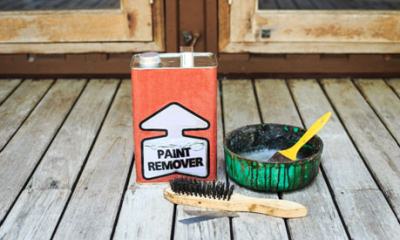 When starting to remove paint, you need to prepare:
When starting to remove paint, you need to prepare:
- clean the plastic from dust;
- choose a wash;
- stock up on rags;
- the tool with which the product is applied (sponge, brush or cotton swab);
- Prepare protective equipment (gloves, respirator).
It is advisable to test the use of a new remover on an inconspicuous area. This approach will make it possible to see the reaction of the plastic to the chemicals used.
How to remove with acetone?
To work you will need:
- ammonia;
- acetone.
Removal process paints:
- Moisten the surface of the stain generously with acetone using a napkin.
- Soak a sponge in ammonia.
- Wipe the stained surface with a sponge.
- Rinse and dry the plastic.
Wash
A remover is a preparation specially designed for removing paintwork. It is selected taking into account the type of paint and varnish that was used. When working, it is necessary to take into account that all types of removers are toxic.
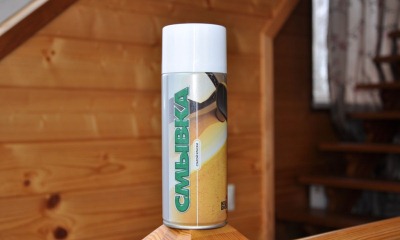 To remove paint from plastic Several steps are required:
To remove paint from plastic Several steps are required:
- Prepare a 50% solution of caustic soda (or a 20% solution of caustic potassium).
- Leave for 4-5 hours.
- After the paint peeling process has begun, you can rub the affected object with a brush.
- Rinse the item.
If it is not possible to remove the paint by immersion, you can apply the selected composition to the surface with a brush.
With this type of use, the remover should not be allowed to dry completely on the surface of the object.. If this condition is not adhered to, paint removal will be ineffective and the process will have to be repeated.
Many professional products are not designed for processing plastic.
How to remove brake fluid?
When using this product, the paint will be removed in layers. To achieve the effect, a dirty plastic object is dipped into brake fluid and kept in it for 20-30 minutes. After this, the remaining paint is cleaned off with an old toothbrush, and the product itself is washed.
This video will show you how to remove paint from plastic using brake fluid:
"Mole"
The “Mole” sewer pipe cleaner can also be used to clean paint from plastic.With this method, the action of the cleaner is a fairly effective solution to the problem. The mole is applied to the surface, left for at least half an hour, and the remaining mass is removed with a brush.
Methanol
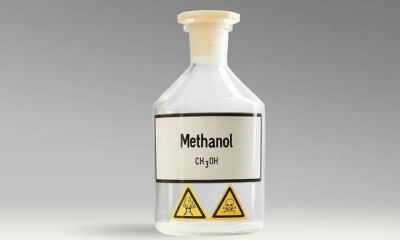 Methanol is a toxic substance, which is highly effective in cleaning plastic and other surfaces from paint.
Methanol is a toxic substance, which is highly effective in cleaning plastic and other surfaces from paint.
Its use must be carried out with the mandatory use of a respirator and gloves in a well-ventilated room.
The procedure is similar to the use of other paint removers. Methanol is applied to the surface, left for a quarter of an hour and removed.
Degreaser, white alcohol
The procedure for using the tools involves performing the following actions:
- Applying them to the surface.
- Leave for at least a quarter of an hour.
- Wiping with a brush.
- Washing off from the surface.
Nothing helps - what to do?
Removing old layers of paint from plastic that has a complex shaped shape using conventional means can be difficult due to its texture. Using liquid glass and silicone sealant will help solve the problem..
But if other methods do not help, you will have to use the most radical method - scraping off the dried coating.
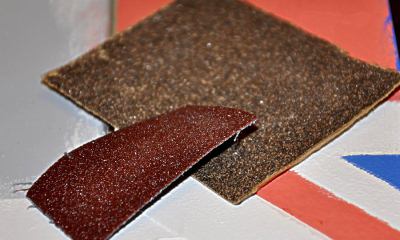 For these purposes the following is used:
For these purposes the following is used:
- sandpaper;
- stationery knife;
- razor blade;
- table knife, etc.
During the cleaning process, the surface is cleaned mechanically. Cured paint is quite hard and will often come off with a layer of plastic when using abrasive or sharp cleaning tools.
Radical methods of cleaning paint, although they cope with the task, but lead to serious damage. Even with great care, irreparable damage can be caused to the surface..
After such cleaning of plastic using aggressive methods, its surface will need to be polished and coated with a new layer of paint.
Recommendations from experts
Professional recommendations will help you cope with this difficult task:
- All work to remove paint from plastic should be carried out using personal protective equipment.
- Excessive physical force, harsh chemicals and abrasive products can damage the plastic.
- If you plan to heat treat water-based paint on plastic, you should take into account that it cannot be carried out at low air temperatures. In this case, the temperature difference can cause deformation of the plastic.
 If electrical appliances with plastic casings, sockets, and wall switches require cleaning, they must first be disconnected from the power supply.
If electrical appliances with plastic casings, sockets, and wall switches require cleaning, they must first be disconnected from the power supply.- After washing electrical appliances, you should wait at least 2 hours before connecting them to the power supply again.
- If a plastic item requires particularly careful handling (for example, a window profile), you should consult a specialist regarding the choice of product.
- Knowing the type of paint that is applied to the plastic will help you quickly select a cleaning product.
In some cases, paint cannot be removed from plastic without damaging the product. Wherein you need to be prepared for the fact that the item may lose its presentable appearance or will require major reconstruction.
Conclusion
Plastic is one of the most difficult surfaces to clean. It is not always possible to remove paint from it quickly, efficiently, and without damaging the product itself.
Time-tested recipes and professional tools will come to the rescue, which should be used strictly according to the instructions.

